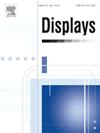Outlier detection in temporal and spatial sequences via correlation analysis based on graph neural networks
Abstract
Outlier detection is essential for identifying patterns that deviate from expected normal representations in data. Real-world challenges such as the lack of labeled data, noise, and high dimensionality significantly impact the effectiveness of existing methods. Understanding the temporal or spatial correlation of normal data is crucial for detecting or forecasting anomalous patterns. In this paper, we introduce UOSC-GNN, a novel Unsupervised Outlier detection architecture by Sequential Correlation analysis with Graph Neural Network. The architecture includes a deviation generation module to measure the variance between expected and actual states of sequential data. This module incorporates a Generic Feature Extraction component to extract intrinsic features from outliers and normal instances tailored to specific tasks, and an Expected State Estimator component based on Graph Neural Network to learn sequential patterns. To ensure the forecast of outliers with high confidence and improve alarm accuracy, an Outlier Probability Assessment module is introduced. This module combines a rule-based index derived from expert knowledge and a statistical index calculated based on generated deviations. Our method is evaluated on two real-world tasks: medical imaging analysis utilizing spatial-related data and early fault detection of instruments leveraging temporal-related data. The results show that our method triggers alarms about 70 min earlier than the best models on the run-to-failure bearing dataset and achieves an accuracy of 92.82% and a sensitivity of 88.51% on the wireless capsule endoscopy image dataset, outperforming traditional outlier detection algorithms consistently.

 求助内容:
求助内容: 应助结果提醒方式:
应助结果提醒方式:


